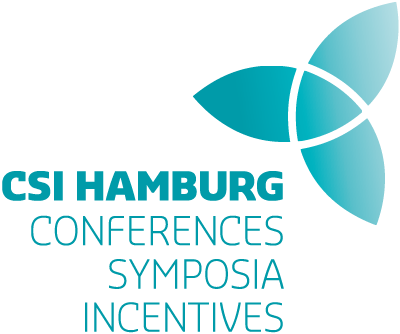Oral Presentation and Short talk Guideline
Oral presentations are organized in sessions scheduled in the programme together with the time of presentation of each contribution including discussion and change over. The oral sessions are scheduled in time blocks per day. Please note that the duration given to your oral presentation includes 5 min. for questions and discussion = a 25 min. talk should be 20 min. actual presentation + 5 min. discussion and a 15 min. talk should be 10 min. actual presentation + 5 min. discussion. In order to keep the sessions running to schedule and allow questions from the audience it is very important to keep the presentations within the allotted time. You will be cut short if your presentation over-runs the allotted time.
Each session will be allocated a chairperson responsible for introducing the speakers, controlling the timing of the sessions and facilitating questions.
The oral presentations are not organized centrally. Therefore, the authors are kindly asked to upload their electronic files directly in the lecture room within a minimum of 30 minutes preceding the actual time block of the session starts. Presentations should be reviewed to be certain the fonts are displayed correctly. A lecture room assistant will be available for any help. Create a backup! We recommend you bring at least two copies of your presentation to the meeting in case there is a problem with your presentation or your USB flash drive.
- Lecture room equipment
- Data-Projector (Beamer) & Screen
- Notebook (Windows PC) for the upload of presentations (USB Flash Drive)
- Presenter to switch slides incl. laser pointer
- Speaker microphone
- Presentation timer for presenter and chairperson
Electronic files prepared on USB Flash Drive, must be submitted by using one of the formats listed below:
- PowerPoint 2013 or newer version
- Video Playback: Windows Media Player, or VLC
- PDF Reader: Adobe Acrobat
- Unix Users: Please bring HTML Files or Adobe Acrobat
- Mac Users: Please save your presentation in PC format
- We accept own laptops, please do not forget adapters (HDMI or VGA) and power supply
- Download Slides_Master_Wilsede_Meeting2023
Using Images Within Your Presentation
PowerPoint will display your presentation in slide show mode resolution. You should consider thes resolution facts, when inserting images into your presentation. If your image file is scanned, or from a digital camera, it is likely to be much larger than the screen resolution. An image size larger than 1920×1080 (that is 2 megapixels) will not translate into a sharper image, when displayed on screen. It will only increase the size of your PowerPoint file and might slow down the playback of your presentation. Reduce the image size in an image-editing program (like Adobe Photoshop) prior to inserting the image into your presentation. After you have made sure that your image size is appropriate, you should save your image as a .BMP, .GIF, or .JPG file prior to inserting it into your presentation. Generally the .JPG format provides high quality, small file size and best portability to other machines.
Using Media Clips Within Your Presentation
Be aware that media clips are not saved as part of your PowerPoint presentation file, the actual video or audio files need to be copied to the computer you will be presenting from. You will need to supply those files along with your PowerPoint file when you upload your presentation.
Using the .WMV file format is the best way to ensure compatibility within PowerPoint on another PC. While MPEG and AVI formats will generally work too, they use a variety of different codecs that may not be installed on the presentation machine.
Disclosure
Please note: All presentations must include the declaration of Conflict of Interest slides as the first slide of the presentation including that of the presenter and any co authors. Presentations must not include any commercial logos. If the research was supported by a pharmaceutical company you must indicate the company’s role in analysing the data or preparing the slides
Important dates
January 2023
Start Abstract submission
February 13, 2023
Start Applicaton for Registration and
Start Stipend Application
March 31, 2023
Abstract submission deadline
March 31, 2023
Stipend application deadline
April 30, 2023
Abstract submission deadline (for Accepted Speakers)
June 24-27, 2023
XXIII. Wilsede-Meeting
Local Organising committee and Scientific Contact
Prof. Dr rer. nat Boris Fehse
Prof. Dr med. Dr h.c. Nicolaus Kröger
Universitätsklinikum Hamburg-Eppendorf
Clinic for Stem Cell Transplantation
Research Department Cell and Gene Therapy
Martinistrasse 52, Campus Forschung (N27)
20246 Hamburg
Meeting Office/Contact
Goernestraße 30
20249 Hamburg

